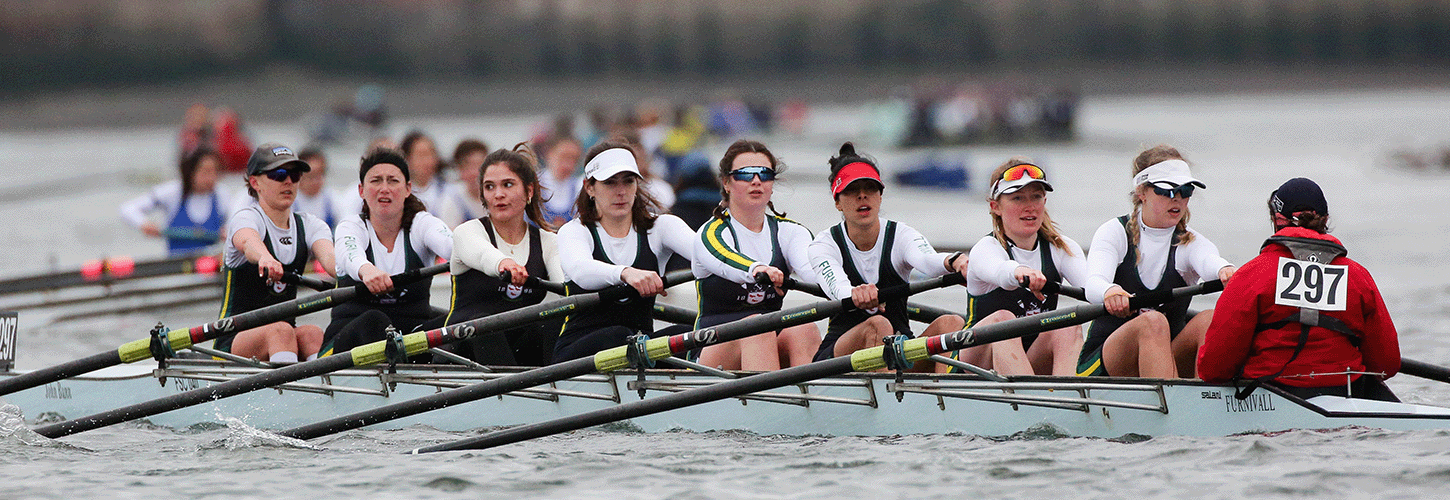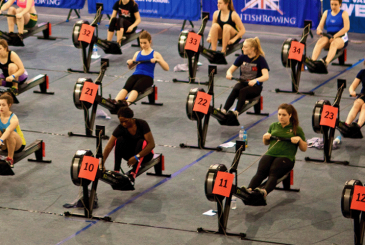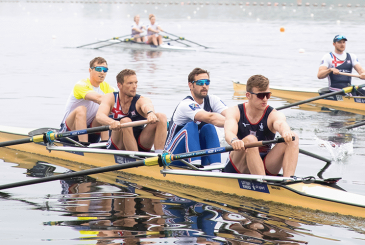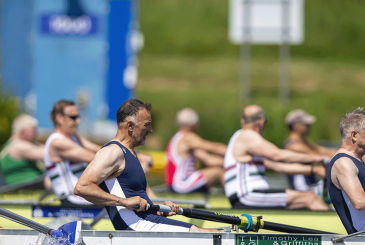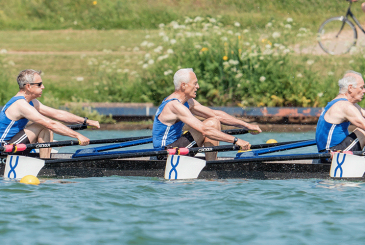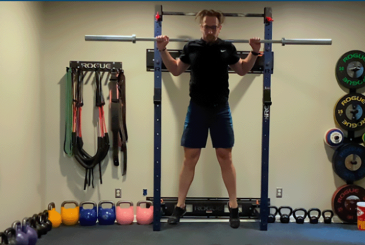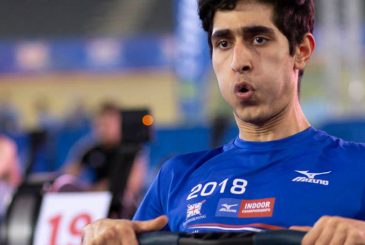One of the most popular articles in our sports science series describes the physiology of a 2k race. Here, Dr Mark Homer provides a breakdown of how we meet the demands of rowing’s other ‘standard’ distance – the 5,00m (5k) head race – and the training, preparation and tactics required to improve its execution
As many of you start training in earnest after a summer break, the focus will be on mileage and building endurance – the basis for rowing performance. 5k races are a common winter test to measure the effects of such training, as well as being competitive discipline in their own right.
Physiological demands of 5k rowing
A 5k race is not simply a 2k race with an extra 3k in the middle. Adding 150% of the distance significantly changes the physiological delivery of a maximal performance. Our ability to produce the highest average power for 15-25 minutes (depending on who you are and what boat you are in!) needs slightly different physiological underpinnings to those of a 2k.
2k racing requires rowers to maximise their aerobic contribution and supplement it with non-aerobic energy supplies throughout, but particularly at the start and finish. This is possible due to the relatively short distance/time. There are essentially three domains or ‘zones’ of exercise intensity: moderate, heavy, and severe. Working within each one elicits very different physiological responses.
Exercise domains
Exercising in the Moderate Domain is sustainable for hours (as long as you are well fuelled and hydrated) because the intensity is low. This is steady paddling in training – the speed at which you can hold a conversation.
The Heavy Domain is still maintainable, but not for anywhere near as long. The ‘top-end’ of this window is termed your Critical Power and is sustainable for an hour at most (watch this video to learn more about this concept).
The majority of a 5k race is done very close to your Critical Power
2k races are actually completed in the Severe Domain, above this critical power threshold, and your time here is limited to minutes as you burn through energy systems that are finite, on top of your maximal aerobic contribution. You typially reach Maximal Oxygen Delivery (O2max) in the third minute of a race and maintainthis until the end.
The majority of a 5k race is done very close to your Critical Power or maximal metabolic steady state (or controversially, the Functional Threshold Power with which the cyclists among you may be familiar). So, a 5k relies less on your sprinting capabilities and more on your endurance base. Or, to put it another way, it’s more about the cake and less about the icing on top. This is why it is used as a test in the winter – it isolates the main focus of training by relying on endurance to get a good score.
Training
There are two main ways to improve your Critical Power and therefore your 5k performance. The first is to include training above it (in the Severe Domain) in order to drag it up. The second is training at/around it in order to push it higher.
An effective way to train at the Critical Power without accumulating too much fatigue is through through high intensity intervals – multiple short duration efforts interspersed with rest/active recovery as part of a balanced training programme. The art of programming interval training could cover a series of articles of its own, but this article provides a useful introduction to the subject. There are also some good introductory sessions on British Rowing’s YouTube channel.
Race tactics
So how do you approach a 5k race tactically? Getting it wrong can be catastrophic, as blowing up with 3k to go is a long way from home. Preparation is therefore key.
A good way to prepare is by attempting a ‘broken race’
On the ergo, do training pieces at a target wattage to to find that fine line between sustainable and unsustainable intensity.
A good way to prepare is by attempting a ‘broken race’ – break the distance into manageable chunks and attempt your target splits with suitable rest in between. As the race approaches you can start to paste them together. The start and finish are less influential than during a 2k race, so race profiles are likely to be flatter. On the water, learning the heart rate associated with your sustainable pace is a useful way of pacing it right. You can also use a power meter if you have one – think Chris Froome using his bike computer to ‘ride to the numbers’ when pacing himself up Tour de France mountains.
Of course, a sprint finish is still useful, but if you leave too much in the tank, no matter how fast you deliver the last 250m, its influence is small.
Nutrition
While a 5k race is significantly longer than 2k, the intensity is still such that the carbohydrate continues to be predominant fuel source you use to produce the energy required. With this in mind, your pre-race nutrition won’t differ to 2k preparation. You won’t run out of fuel (unless you are already under fuelled), so a familiar high-carbohydrate meal that is easy to digest will be sufficient.
In conclusion, a 5k race reduces the importance of maximal power and emphasises the endurance contribution to performance. Executing an optimal 5k relies on finding and improving your maximal sustainable intensity, and being able to sit at or just above this ‘sweet spot’ for the duration. Working on improving your speed at this distance will have a measurable impact on 2k performance, especially when combined with some high-end speed work as the summer racing season approaches.
Photo: Ben Rodford/Women’s Eights Head of the River Race.


